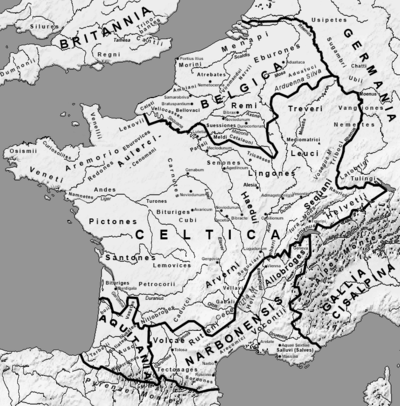Latobrigi
The Latobrigi (or Latovici)[1] were a Celtic tribe mentioned in Julius Caesar's Commentarii.[2] According to Caesar, 14.000 Latobrigi joined the Helvetii in their attempted migration to southwestern France in 58 BC, together with several larger contingents from other tribes. After the defeat at Bibracte, they were ordered to return to their homes and are not mentioned again in the Commentarii.

Due to the lack of sources, their localisation remains largely speculative, though an area close to the Helvetian territory is usually assumed. It has been suggested that they may be attested in an inscription from Brigantia-Bregenz, Austria, or that Juliomagus-Schleitheim might have been their tribal centre.[3] They are normally not identified with the Pannonian tribe of a similar name, the Latobici.
Notes
- The spelling varies in the sources. Julius Caesar's Commentarii have Latobici / Latovici in the first instance and Latobrigi in the others; Orosius' description based on Caesar uses Latubogiorum and Latobogiourum (in the Genitive plural).
- Julius Caesar, Commentarii, book 1.5,4, 1.28,3, 1.29,2.
- SPM IV Eisenzeit - Age du Fer - Età del Ferro, Basel 1999, p. 37. ISBN 3-908006-53-8.
- Latobrigi in German, French and Italian in the online Historical Dictionary of Switzerland.
